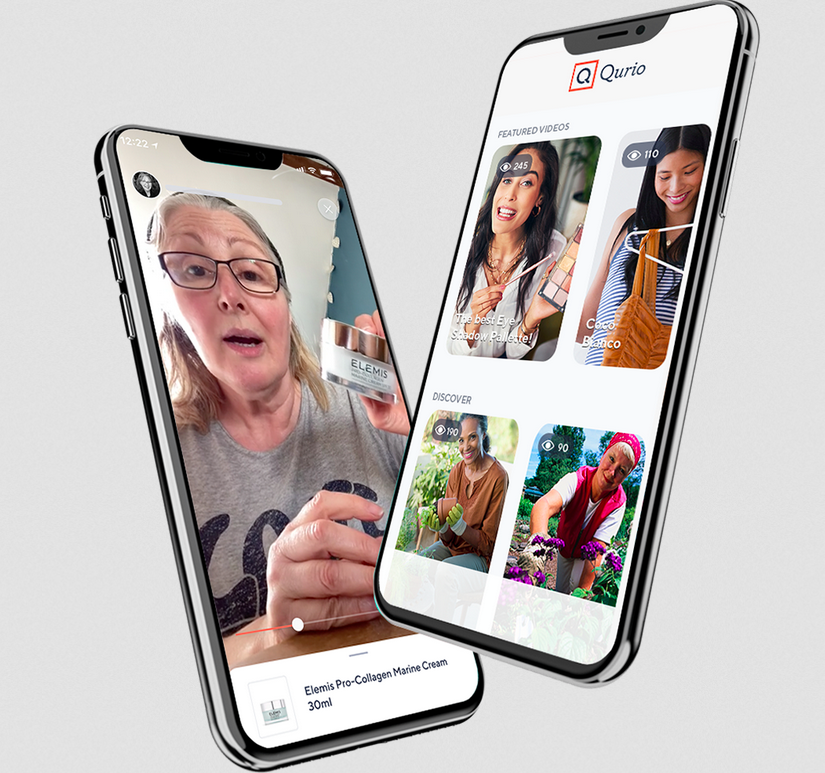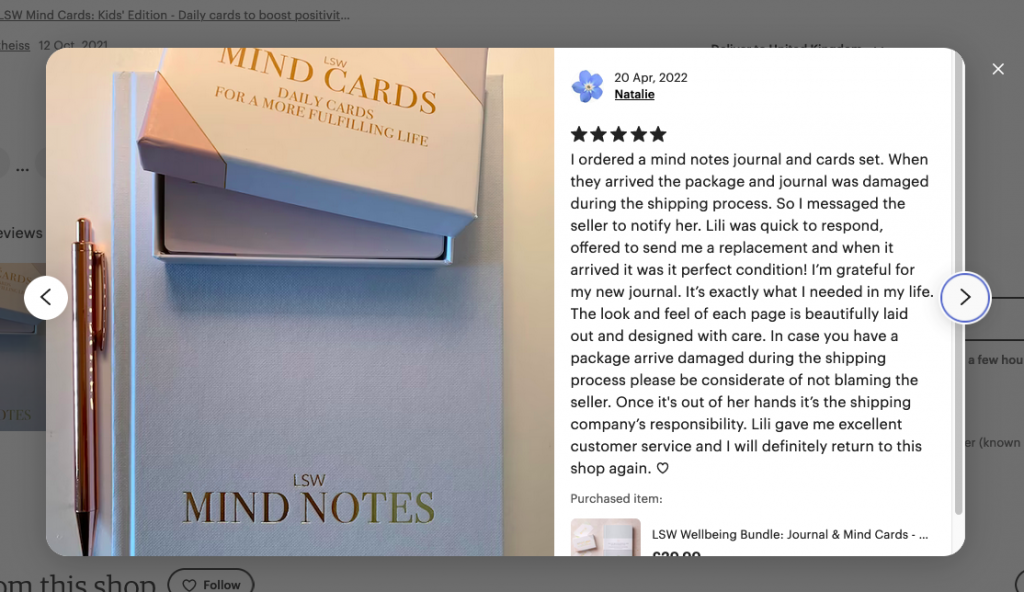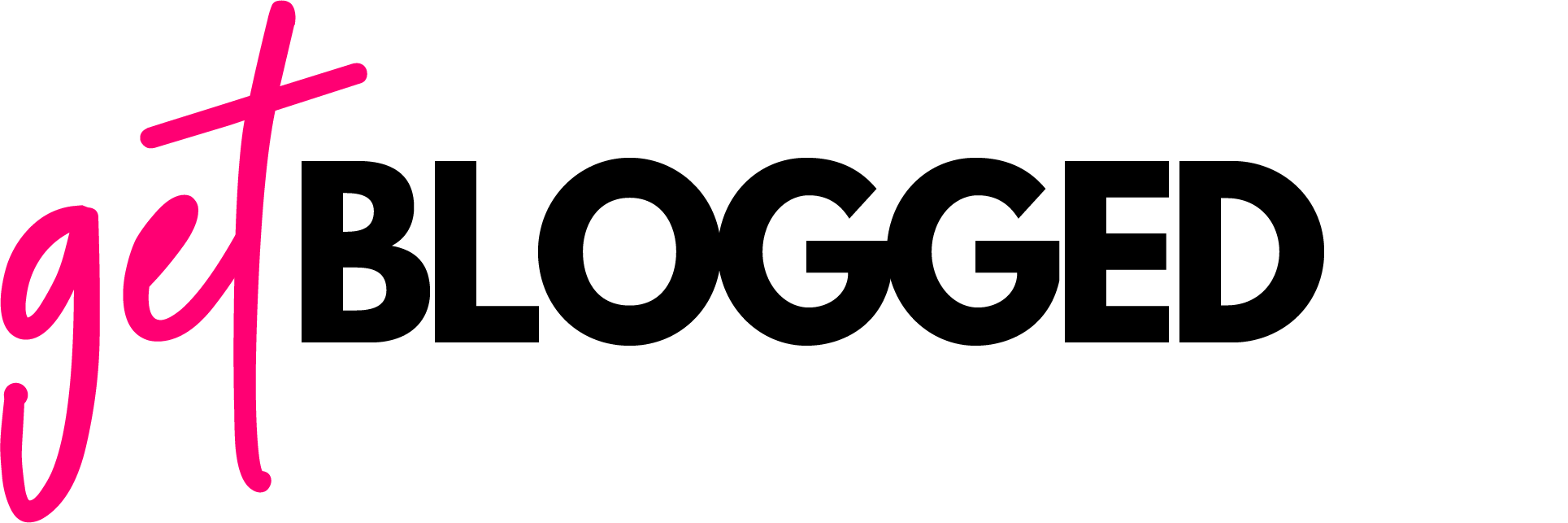Creating content for your business doesn’t have to be solely a one-person job. With the right strategy, you can take advantage of user-generated content (UGC) and get your customers to create content for you. In this blog post, we’ll look at why using UGC is important, what kind of UGC works best, and how you can successfully implement a strategy to increase engagement with your brand. We’ll also look at some examples of successful companies that have leveraged UGC in their marketing efforts to produce positive results. By the end of this post, you’ll understand how to use UGC to help build trust among potential customers and make more meaningful connections with them.
But first, what actually is user-generated content?
User-generated content (UGC) is any form of content created and shared by users, such as reviews, ratings, stories, images or videos. It can be anything that a user creates or contributes relating to a brand or its products.
UGC is valuable in that it offers businesses the opportunity to gain true insight into the experiences of their customers and the effectiveness of their offerings.
It also allows them to create an ongoing dialogue between their brand and its customers as well as give potential customers an idea of what others think about the product/service. UGC is becoming increasingly popular among brands as it gives them access to genuine customer feedback and insights into how their products/services can be used.
The benefits of encouraging user-generated content
Collecting user-generated content (UGC) is an empowering and effective way to show off the true potential of your product or service. Not only does it give customers a voice, but it also allows you to showcase the unique perspectives of your target audience in an organic and authentic way.
By gathering valuable feedback from those who understand and appreciate your product, you can increase customer trust by demonstrating how your offering is making a difference in their lives. UGC is a powerful way to create an emotional connection with customers that allows them to be a part of the conversation.
Why UGC is trusted more than brand-created content
User-generated content is trusted more than brand-created content because it is seen as unbiased and objective. Because UGC is created by actual customers rather than the brand itself, it feels less like a sales pitch and more like an honest opinion.
It also allows potential customers to see how people are actually using the product or service, which can be a great way to instil trust in them.
Additionally, UGC gives brands an authenticity boost as it shows that customers are willing to share their positive experiences with the product or service and even recommend it to others. This helps build relationships with current customers while also helping draw in new ones who might not have been aware of the brand before.
Do you have to get a customer’s permission to publish their user-generated content online?
When it comes to using customer-generated content in marketing campaigns, it is always wise to get the customer’s permission first. This helps protect both parties involved and eliminates potential legal issues down the line.
Before including any customer photos or reviews in a marketing campaign, companies should be sure they understand any applicable copyright laws and obtain proper consent from customers. In addition, customers should always be notified if their content will be shared with a broader audience, whether through media channels or website promotion.
Taking these steps ensures that both customers and the company are fully aware of how their material is being used.
10 user-generated content strategies to drive conversions and engagement

OK, let’s now explore 10 user-generated content strategies that have been proven to drive conversions and engagement.
1. Feature user-generated content on your website or blog
Sharing user-generated content on your blog is an excellent way to attract new visitors and drive conversions. By showcasing the experiences and outcomes of real customers, you can demonstrate how your product or service has made a difference in their lives. This encourages new customers to take the leap and purchase from you as they can see tangible results.
Additionally, content created by users gives potential customers insight into different ways that your product or service can be used, allowing them to visualise its use in their own lives. Engaging with this kind of authentic content builds trust and loyalty with your audience, driving higher engagement rates and increased conversions.
When it comes to featuring user-generated content on your website or blog, there are no hard and fast rules. You can feature anything related to your brand that customers have created, such as photos, reviews, stories and even videos.
2. Use user-generated content in your marketing materials
Utilising user-generated content in your marketing materials is an effective way to connect with your target audience and show that customer testimonials, stories, photos, videos, and more can be a valuable asset.
User-generated content provides an opportunity to showcase real experiences while giving your brand a unique and authentic voice. It is also a great way to build trust and loyalty with current customers while reaching new ones.
By featuring user-generated content in your marketing materials, you can increase engagement and create a positive experience for everyone involved.
3. Use UGC to create social media ads that are more engaging and effective
Utilising user-generated content (UGC) to create social media ads can be an extremely effective way to engage with your audience and drive conversions and this is a strategy that’s fast gaining popularity amongst marketers.
UGC adds a personal touch and authenticity to your ad, which helps to capture the attention of potential customers. Additionally, UGC can help build trust and loyalty by showing off real-life successes or experiences that your product has brought about.
This form of advertising also helps to demonstrate that you understand the needs of your customers, and are actively listening and responding to their feedback.
4. Add customer testimonials and reviews to your website for increased trustworthiness
Adding customer testimonials and reviews to your website can be an invaluable way to increase the trustworthiness of your product or service. Having direct feedback from those who have experienced your offering lets potential customers know that you are credible and have delivered what was promised.
Testimonials also allow you to demonstrate the success stories of customers who have used your product, which gives confidence to prospective buyers that they too can benefit from its features.
Reviews show that you understand and appreciate the feedback of users, allowing them to take part in a conversation with you. This ultimately creates a sense of connection between customers and your business that will lead to increased loyalty.
5. Use UGC as part of an email marketing campaign for better engagement rates
Incorporating user-generated content into your email marketing campaigns can be an effective way to boost engagement rates. UGC offers a glimpse into real customer experiences, allowing people to better relate and connect with a brand in a more personal way.
Additionally, emails featuring UGC provide subscribers with insight into how others are using the product or service and the positive results they’re achieving. This kind of content gives potential customers more confidence that your product/service is worth investing in.
Utilising UGC as part of your email marketing campaign can therefore be a great way to attract new customers and increase conversions.
6. Implement customer reviews on your product pages
Adding customer reviews to your product pages is an invaluable way to increase conversions and boost sales. Reviews provide potential customers with an independent assessment of a product’s quality, helping them make an informed decision as they evaluate their options.
Additionally, customer reviews can improve the overall user experience by offering additional feedback about products and services beyond what’s available on the website. Furthermore, displaying customer reviews on your product pages can also help build trust in your brand and create a sense of credibility among customers.
Effective use of customer reviews can therefore be an essential element of any successful online retail strategy.
7. Ask customers to submit photos and videos of themselves using your products
Asking customers to submit photos of themselves using your products is an excellent way to generate buzz, attract new customers and increase conversions. These customer-submitted photos can create a personal connection between customers and the brand while highlighting the real-world application of your products.
Additionally, these visuals are great for engaging with potential customers and showcasing the product in different environments and situations. Social media platforms such as Instagram can help spread user-generated content further as people share images created by fellow customers.
Utilising user-generated photos and videos can therefore be an effective way to promote your products and increase engagement with your brand.
8. Create a hashtag for customers to use when sharing their experiences with your brand
Creating a hashtag for customers to use when sharing their experiences with your brand is a great way to encourage customer engagement and foster word-of-mouth marketing. Hashtags provide an effective way to keep conversations around your brand visible, as they can help you easily retrieve relevant mentions across platforms.
Additionally, hashtags allow customers to join in on the conversation and share their experiences with others. Utilising a branded hashtag can also help increase brand awareness and create broader visibility for your product or service. Developing an engaging hashtag for customers to use when discussing your products is therefore an important part of any successful social media strategy.
For example, a clothing company could ask customers to share pictures of their latest purchase and use #BrandNameLove when posting. This allows customers to join the conversation and engage with each other, while also providing an effective way for brands to track user-generated content about their products and services.
9. Use social media platforms to share user-generated content that is relevant to your target audience
Using social media platforms to share user-generated content that is relevant to your target audience is a great way to engage potential customers, establish trust and boost brand awareness. User-generated content can be used to showcase the experiences of current customers and potential customers.
When people see others talking positively about a product or service, they are more likely to trust it themselves. Additionally, by promoting user-generated content on your social media platforms, you can encourage more people to join in on the conversation around your brand. This can help create relationships between you and current followers, as well as help drive more visibility for your business across different channels.
By tapping into the power of user-generated content, you can therefore make powerful connections with current and potential customers.
10. Reach new audiences with influencer and blogger collaborations
Lastly, if you’re just starting out (or indeed very well established) collaborating with influencers and bloggers is an extremely effective way for brands to reach new audiences and create highly visual and engaging content. These collaborations help increase brand visibility, expand the reach of your message, and establish credibility with potential customers.
Influencers can have a large following who are already interested in what they have to share and are more likely to interact with posts featuring them. Similarly, bloggers have a strong presence online, as well as an engaged audience and unique insights that can drive meaningful conversations around your brand.
How Nike, QVC, GoPro and Etsy successfully leverage user-generated content

Nike, QVC, GoPro and Etsy have successfully leveraged user-generated content to build their brands and increase conversions. By learning from these four successful cases, any company can create an effective user-generated content strategy to promote its products or services.
QVC and their video review app, Qurio
QVC has revolutionised the way customers shop with their innovative video review channel, Qurio.
By combining user-generated content with high-quality video reviews, customers are able to get an in-depth look at products before making a purchase. This helps boost conversion rates by allowing customers to make informed decisions on what they want to buy.
Additionally, the site actively encourages shoppers to leave their own product reviews, creating a transparent shopping experience that allows users to make more confident buying decisions. The videos effectively create a strong sense of community between buyers and provide an interactive platform for engaging with potential customers.
How GoPro used user-generated content as a brand-building exercise
One well-known example of a brand using user-generated content in its marketing campaigns is GoPro.
They launched a campaign called #GoProAwards, encouraging fans to create and share videos using the company’s products. The videos were then judged by an internal team and the winners were rewarded with cash prizes and free gear.
This campaign was highly successful and resulted in increased engagement from their customers, resulting in thousands of submissions from around the world.
It was also an effective way for GoPro to showcase their products to potential customers, as videos featured creative ways people were using them in everyday life. Ultimately, this campaign demonstrated how user-generated content can be used by brands to drive sales and increase customer loyalty.
How Nike leveraged user storytelling
Another example of a well-known brand using user-generated content in its web content is Nike. They launched a campaign called “#justdoitstories” which focused on inspiring stories from customers about their personal journeys with fitness, self-improvement, and athleticism.
The goal was to create an online platform where customers and athletes could share their stories to inspire others. To further engage viewers, Nike also included interactive elements such as polls and quizzes related to the relatable content they were sharing.
This engagement resulted in more people visiting the website off of social media platforms, which increased traffic to Nike’s website significantly.
Through this campaign, Nike showed how user-generated content can be used to connect with customers on a deeper level, build relationships, and even drive more web traffic.
How Etsy increases conversion for their sellers

Etsy has successfully used customer reviews and photos on its seller product pages to increase conversion. They introduced a customer reviews feature which encourages customers to leave detailed, personalised reviews about the products they purchased. This enabled potential customers in the decision-making process to better understand the product and its benefits.
Etsy also includes photos of real customers using or wearing their products, which helps potential buyers get a clear visualisation of how their purchase may look when it arrives. These customer reviews and photos help potential buyers make a more informed decision, resulting in higher conversions for Etsy’s products.
How to encourage users to create content for you

So far we’ve discovered that user-generated content (UGC) is one of the most powerful tools at your disposal for driving conversions and engagement. By leveraging UGC, you can tap into the collective wisdom and creativity of your customers and users to create compelling, engaging content that helps you achieve your business goals.
Now let’s explore 3 ways to persuade and encourage your customers or users to create content for you.
Reward users for generating high-quality content
Rewarding users for creating high-quality content is an excellent way to show appreciation and encourage further participation. One way to reward users is by offering monetary compensation or gift cards for their hard work.
You can also choose to offer recognition in the form of special mentions, profile badges, leaderboards, feature posts, or awards that are tailored to the content created. Incentives like these can be a great motivator for users who are passionate about the topic while providing an opportunity to showcase their talents and unique perspectives.
Hold a contest or giveaway that encourages users to generate content
Holding a contest or giveaway that encourages users to generate content is a great way to boost engagement and encourage creativity. It can be used to generate fresh ideas, highlight emerging voices, and involve your target audience in the process.
A successful contest or giveaway will provide clear guidelines and prizes that are relevant to your theme. By creating an engaging environment, you can capture valuable user-generated content while rewarding those who participated in the process.
Reward customers for referring their friends and family members to your business

Rewarding customers for referring their friends and family members to your business is a great way to increase customer loyalty, generate new leads and ultimately drive more sales. By providing customers with incentives such as discounts or free products, you can encourage them to share your brand amongst their networks.
This type of referral program can help increase word-of-mouth marketing and build a stronger connection between customers and the brand. In addition, rewarding customers for referrals allows you to build relationships with new potential customers who may have not otherwise heard about your product or service. Utilising a rewards system can therefore be an effective tool in boosting customer retention and acquiring new leads.
Companies like MentionMe, ReferralCandy and Referral SaaSquatch offer easy-to-use software that can help businesses quickly integrate referral schemes into their current marketing strategies.
With these solutions, brands can easily set up their referral program and start rewarding customers for referring their friends or family members. Additionally, these tools come with comprehensive reporting capabilities to accurately track signups and conversion rates from the referral program.
Through using such software, businesses can quickly build a customer referral network in a short amount of time, increasing their chances of reaching new audiences and ultimately growing sales.
It’s time to unleash the power of user-generated content
User-generated content can be a powerful and effective tool for driving conversions and engagement. We’ve discussed what UGC is, strategies to improve engagement and conversions, ways to get customers to produce content, and four brand case studies that demonstrate the success of these strategies. By leveraging the full potential of UGC in your marketing efforts, you can increase sales, reach more customers, and build a positive reputation for your brand.
Let us know in the comments which strategy you’ll plan first!


 rated
rated







![6 ways to collaborate with bloggers this Thanksgiving [with case studies]](https://getblogged.net/wp-content/uploads/2022/10/pexels-rodion-kutsaiev-10060431-300x300.jpg)


![Blogger's guide to seasonal gift guides [+ 20 ideas to steal]](https://getblogged.net/wp-content/uploads/2022/09/pexels-ray-piedra-1502219-300x200.jpg)







